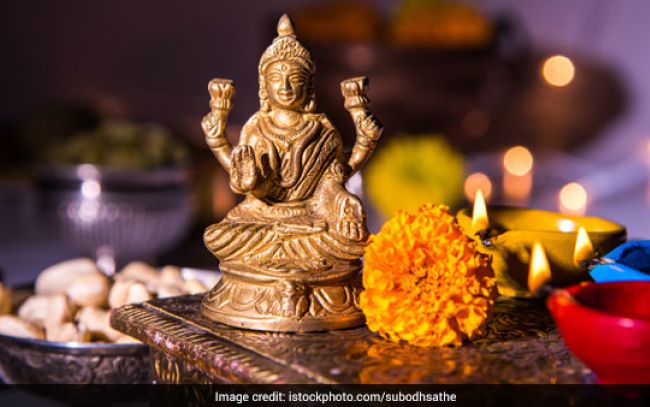
Significance of Diwali or Deepavali
Diwali marks the homecoming of Lord Rama with his wife Sita and brother Laxmana to his kingdom Ayodhya after 14 years of exile. Lord Rama who left for his 'Vanvaas', following his father King Dasharat's command, spent 14 years wandering in the forests and villages of India. Towards the end of his exile, Sita is abducted by the ten-headed king of Lanka Ravana who disguises himself as a Yogi as asks Sita for 'Bhiksha' (offerings). While handing it over to him, Sita crosses the Laxman-Rekha drawn by Ram's younger brother Laxman and Ravana is able to capture her. Lord Ram, on hearing this, launches a war against the army of Ravana and reaches Lanka to fight Ravana and bring his wife back. The victory of Lord Rama in the epic battle of Ramayana symbolizes the victory of good over evil.

Diwali 2017: Deepavali marks the homecoming of Lord Rama
It is believed that when the news of Lord Ram returning to his homeland reached Ayodhya, the entire city was lit with thousands of oil lamps (diyas) and decorated with flowers and beautiful rangolis. Since then, Diwali has been known as the festival of lights. In order to welcome, Lord Ram into their homes people decorate their houses with oil lamps, which is why the festival is also called 'Deepavali'. The tradition of lighting oil lamps symbolizes the victory of good over evil. People also make preparations to welcome Goddess Lakshmi by drawing beautiful rangolis, and Paduka (footsteps) on the entrance of their houses. In Bengal, people conduct the Kali puja on the Diwali day which takes place overnight. There is also a tradition of distributing sweets and dry fruits to friends, relative and neighbours to celebrate the festival of Diwali. Kaju Katli, Besan Laddoo and Soan Papdi are some of the most common sweets enjoyed during Diwali.
(Also Read: Diwali 2017: 9 Delicious Diwali Snacks for the Festive Celebrations)

Kaju Katli, Besan Laddoo and Soan Papdi are some of the most common sweets of Diwali
Five-Day Festive Extravaganza
Diwali celebrations are spread across a period of five days with each day having its own significance and traditional rituals that are followed. The celebrations kickstart with 'Dhanteras', the auspicious day on which people buy utensils, silver ware or gold. It is believed that new "Dhan" or some form of precious metal bought on this auspicious day is a sign of good luck and prosperity. Choti Diwali follows next, which involves preparations for the Badi Diwali. People start decorating their houses with lights, and hold get-togethers. The next day is celebrated as Badi Diwali, the main festive day which is on 19th October 2017. On this day, people perform laxmi puja, visit each other's houses with sweets and gifts, burn fire crackers and spend time with their family and friends. The day after Diwali is celebrated as Govardhan Puja and finally the five-day celebration comes to an end with Bhai Dooj where sisters apply tilak on their brother's forehead and siblings pray for each other's well-being.
Diwali Date
- Dhanteras 2017: 17th October 2017
- Choti Diwali 2017 : 18th October 2017
- Diwali 2017: 19th October 2017
- Govardhan Puja 2017: 20th October
- Bhai Dooj 2017: 21st October
Hope you have a good time with your loved ones and get to enjoy some great food this Diwali. Here's wishing you all a Happy Diwali 2017!
Track Latest News Live on NDTV.com and get news updates from India and around the world

